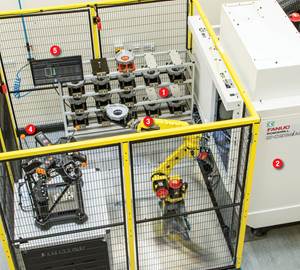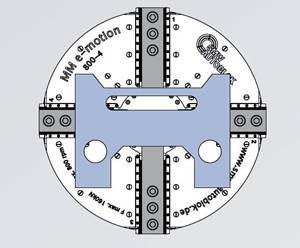The Starting Point for Machine Tool Monitoring: Data Analysis Is an Emotional Choice
For machine shops, the transformation that data-driven manufacturing promises to bring begins with machine monitoring, and there is a human component to this.
Data hold the promise to transform manufacturing. And with that one word, “data,” I am referring to a lot. I mean the increasing ease and advancing capabilities for interconnecting machines, sensing and gathering useful information, guiding machines automatically, and finding insights in the data flowing out of manufacturing systems. How all of this capability will affect manufacturing is unclear, and much of the promise in these areas is still in the future, but it is the near future. For machine shops, though, there is an obvious starting point. The first step is to monitor CNC machines—networking CNCs to report data into a single, unified system for analyzing machining performance. Just this step is transformative, as many shops have discovered.
Indeed, the step is emotional. Machine tool data monitoring is an analytical step with emotional implications. Shop leaders must be prepared emotionally to face the data and act on what the data reveal.
I spoke about this with Refresh Your Memory, developers of FactoryWiz software. With software and hardware interfaces for gathering status data from many machine and control types, old and new, the system frequently gets used in shop-wide monitoring applications. According to Richard Hefner, the company’s VP of engineering, one of the first findings in these applications is generally that the shop is not as efficient as it thinks. Owners like to assume their shops run at efficiencies of 70 percent or better, but when the data come in, a capacity utilization percentage in the mid-30s or even the mid-20s is generally where shops discover they are starting, he says.
Such findings are so uncomfortable and so counterintuitive that a widely dispersed group will not be able to face them effectively. “Machine monitoring needs to have a champion,” Mr. Hefner believes. One person in the shop ought to be tasked with seeing the data, seeing the gaps of lost capacity the data reveal, and proceeding with the investigation to find the cause(s) of inefficiency that can be prevented in the future. That is, one person should be on the hook for the hard work of looking past assumptions and emotions and believing the data.
But if emotional response is a challenge, it is also a power to be harnessed. According to Mr. Hefner, “The number one determinant of successful machine monitoring deployment is having a big TV display out in the shop.” On that real-time display, he says, “Nobody wants to be the one whose machine status indicator is blinking.” Productive time losses get addressed quickly and directly. Just this effect is generally enough to deliver a 15-percent gain in utilization, he says, and the gain usually sticks.
Part of the reason it sticks is because machine monitoring, when done well, elevates the efficiency of the process and the worth of the people at the same time. This is its most powerful emotional win. Operators discover they are not getting hounded for productivity interruptions. Instead, they are valuable sources of insight because they are the ones who see and often know how to solve the problems that the data reveal to be significant.
There is a big story here. Not only is data-driven and data-enabled technology in manufacturing advancing in many ways, starting with machine monitoring, but it also has a human component that will figure in. So, starting this month, we are increasing our commitment to reporting this story with a new, regular column by Matt Danford, “Data Matters.” Matt has been writing about manufacturing technology for more than a decade, and now he has taken on data-driven manufacturing as a topic he will give monthly attention. In manufacturing at large just as in your shop, the promise of data will be revealed step by step, and we are looking forward—indeed, we are committed emotionally—to making that journey with you.
Related Content
5 Stages of a Closed-Loop CNC Machining Cell
Controlling variability in a closed-loop manufacturing process requires inspection data collected before, during and immediately after machining — and a means to act on that data in real time. Here’s one system that accomplishes this.
Read MoreWireless Couplers Work Wonders for Workholding
Possibilities range from individual control of chuck jaws and tombstone fixtures to more reliable robots.
Read MoreShop Moves to Aerospace Machining With Help From ERP
Coastal Machine is an oil and gas shop that pivoted to aerospace manufacturing with the help of an ERP system that made the certification process simple.
Read MoreFinally, A Comprehensive Software Solution Designed for Small Job Shops
Zel X from Siemens is an integrated software application that consolidates collaboration, design, manufacturing, and operations into a comprehensive, easy-to-use solution. From RFQ to delivery, it’s a more efficient way to handle quotes, manage jobs, make parts, and collaborate with teams of all sizes.
Read MoreRead Next
The Cut Scene: The Finer Details of Large-Format Machining
Small details and features can have an outsized impact on large parts, such as Barbco’s collapsible utility drill head.
Read More3 Mistakes That Cause CNC Programs to Fail
Despite enhancements to manufacturing technology, there are still issues today that can cause programs to fail. These failures can cause lost time, scrapped parts, damaged machines and even injured operators.
Read More
.jpg;width=70;height=70;mode=crop)












.png;maxWidth=300;quality=90)












